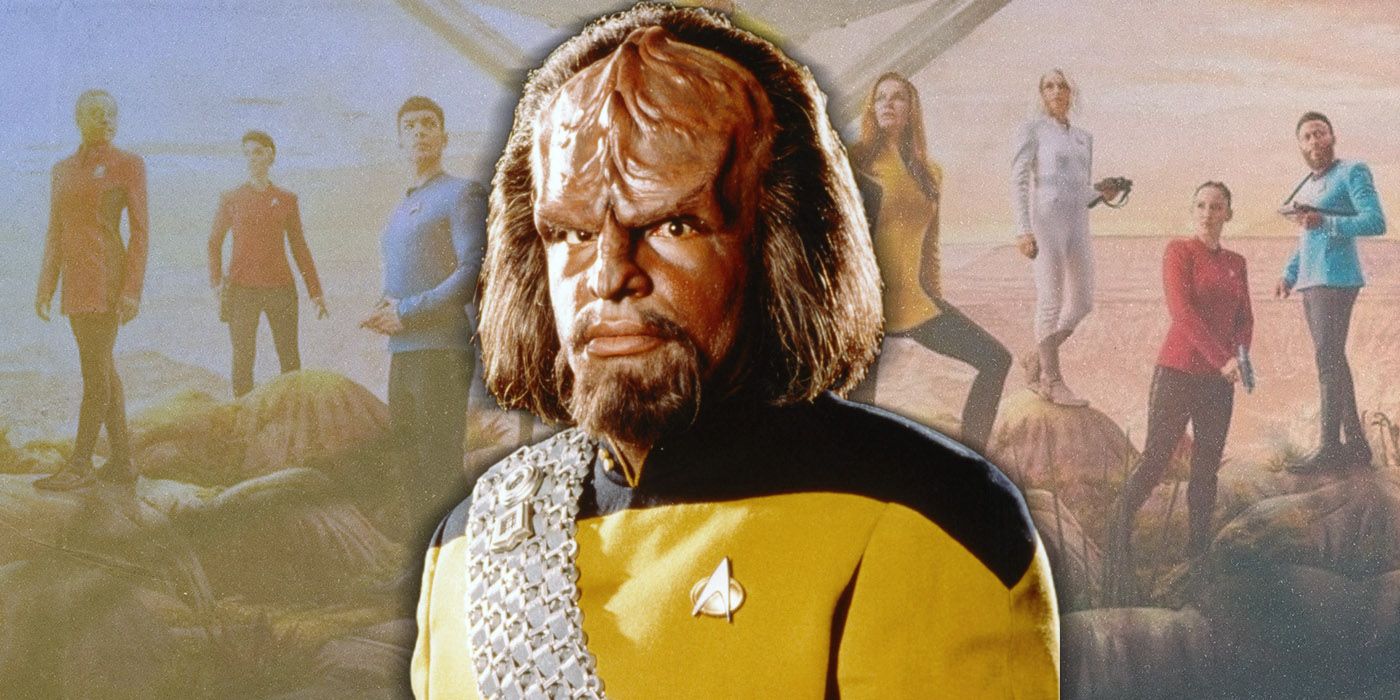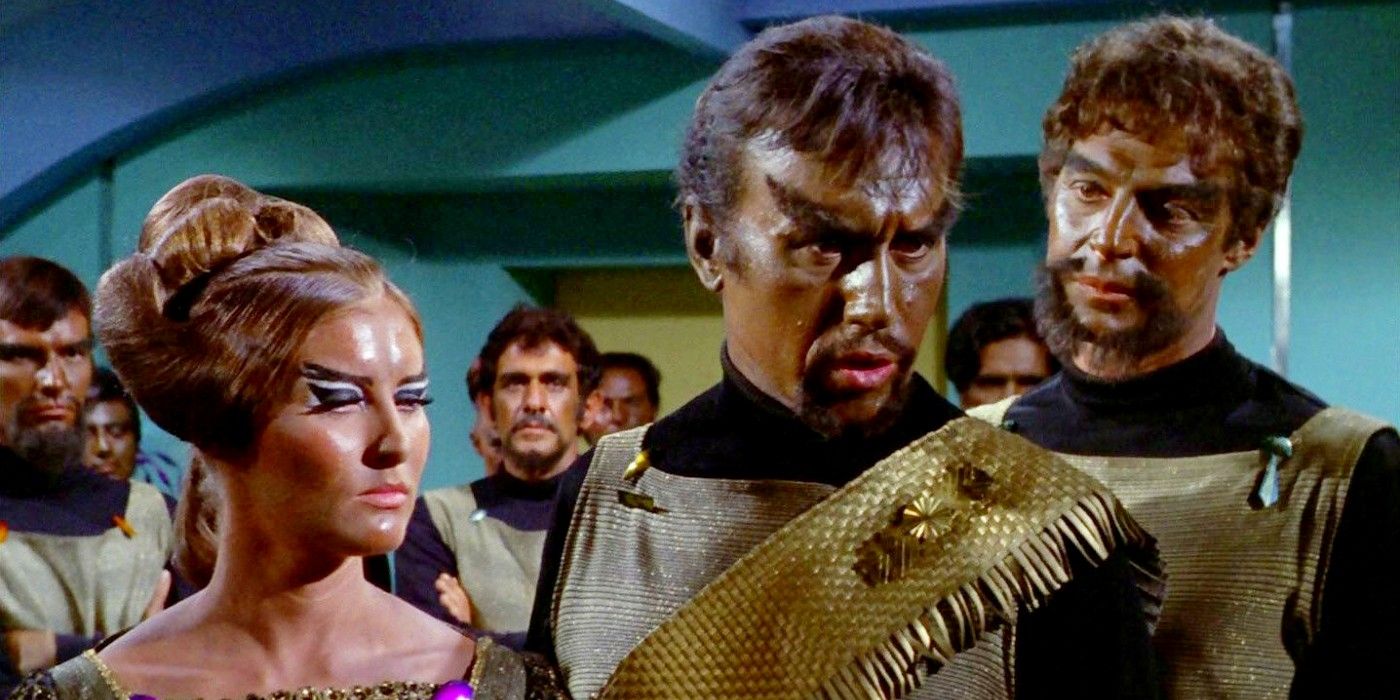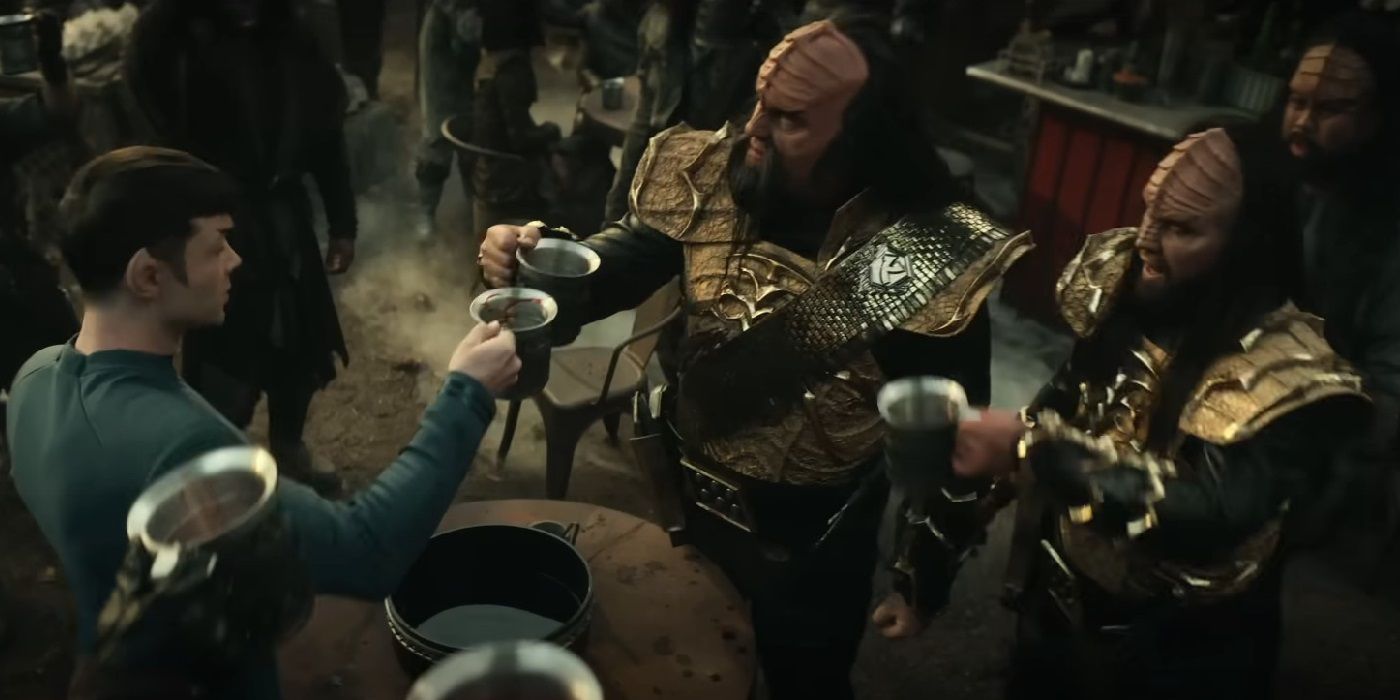The trailer for Season 2 of Star Trek: Strange New Worlds appears to cry uncle on the question of Klingons. The species' visual reimagining in Star Trek: Discovery created an uproar among the Star Trek faithful, and while the controversy was never as heated as it sometimes appeared, it apparently resulted in some big changes -- or rather, a reversal -- for Strange New Worlds. Discovery's Klingons simply differed too much to explain away in canon, and Strange New Worlds' second season makes it appear as though the franchise is officially acknowledging the fact.
The Klingons' reveal in Strange New Worlds is the latest chapter in one of the longest -- and weirdest -- retcons in all of pop culture. The Klingons underwent a similar appearance change for Star Trek: The Motion Picture, leading to decades of puzzlement within the fanbase. Discovery made the same decision for similar reasons, and this time, audiences demanded a change. By obliging, Star Trek has signaled how the Klingons are likely to look and act in future projects.
Star Trek's Klingons Have Undergone at Least One Big Change Before
Klingons in Star Trek: The Original Series closely resembled humans, owing to the show's comparative lack of budget. They also carried problematic overtones, acting as thinly veiled stand-ins for Communist China. They similarly arrived with a host of barely disguised stereotyping in their wake. When the franchise made the leap to the big screen, the larger budget allowed for a radical re-imagining. The Klingons open the movie as a trio of attack cruisers that are summarily vaporized when they take on V'Ger, a mysterious, powerful alien cloud. The moment features Star Trek regular Marc Lenard sporting what became the species' signature forehead ridges, as well as the Klingon language spoken for the first time onscreen and Jerry Goldsmith's iconic Klingon theme on the soundtrack.
The then new Klingon look made a singular impression, and formed the foundation for what became a huge part of the franchise. Klingons continued to make regular appearances in the movies and television shows, with Worf becoming the most iconic Klingon of the franchise. Worf had a central role in Star Trek: The Next Generation and Star Trek: Deep Space Nine, which allowed Star Trek to further explore their culture and politics. That established them very firmly in the fanbase's mind, but it had the unintentional effect of drawing attention to the vast visual differences between the "second wave" Klingons and those of The Original Series.
Star Trek edged quietly around the issue for many years, notably in a cryptic comment Worf makes in Deep Space Nine Season 5, Episode 6, "Trials and Tribble-ations" about the different looks. He states that his people "do not discuss it with outsiders." It took Star Trek Enterprise Season 4, Episode 15, "Affliction" to explain The Original Series look as a genetic augmentation required for the species to survive a weaponized virus. It's perhaps the most elaborate -- and effective -- piece of retconning in pop culture. It took that much simply because Trekkies needed some plausible reason for the obvious changes in appearance.
Strange New Worlds Confirms the "Classic" Star Trek Klingon Look
Worf and other Klingon characters made the species a beloved staple of Star Trek, but that came with a price. Familiarity reduced their sense of menace, and while they always carried a hint of danger, they also ceased to be as frightening. The franchise looked to change that, starting with Star Trek: Into Darkness which reimagines them as far more alien and hostile. Discovery took that ball and ran with it, with the first season's events leading up to the Klingon-Federation War a few years before The Original Series. As such, their Klingons become more alien and terrifying. They make for strong drama, but they also stray too far from the established look to ignore.
Another convoluted retcon appears to be more than fans are willing to take. Star Trek is an ongoing entity, and part of its longevity stems from knowing what to change and when. In this case, the change proved too great for the fans to support as canon. The reaction to the change eclipsed a strong plot and fascinating new characters in Discovery in the name of a very different vibe. Given those circumstances, the inclusion of the "classic" Klingons in the Strange New Worlds trailer feels like a quiet mea culpa. The new look is the old look, and for obvious reasons, it probably won't be going anywhere.
Season 2 of Star Trek: Strange New Worlds debuts June 15 on Paramount+.



